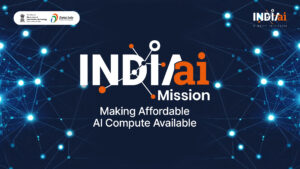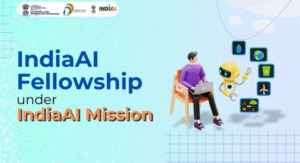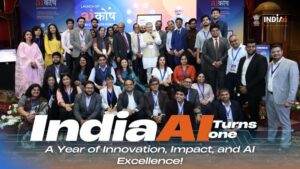India’s Big Bet: Launching Incentives for Homegrown Foundational AI Models
India has just taken a decisive step to build sovereign artificial intelligence capabilities by rolling out incentives aimed at producers of foundational AI models. Announced under the IndiaAI Mission and implemented through the Ministry of Electronics & IT (MeitY) and related bodies, the incentive window (reported at ₹1,500 crore) targets organisations building large-scale language models, speech, vision and multimodal foundational models from the ground up — offering grants, subsidised compute, and other resources to accelerate domestic model development. techshotsapp.com+1
Below I unpack what the scheme is, why it matters, how it’s being implemented, who’s likely to benefit, and what the move means for India’s tech ecosystem, industry, and governance.
What exactly has the government launched?
At the heart of the initiative is a structured incentive programme — part of the broader IndiaAI Mission — designed to fund and support teams building foundational AI models (models that serve as base layers for many downstream applications). The specific “incentive window” has been widely reported as ₹1,500 crore and includes a mix of direct grants, compute credits (subsidised GPU time on national/common facilities), datasets and tooling support, and access to testing/validation infrastructure. The IndiaAI call for proposals that invited teams to apply went out earlier in the year and reportedly drew hundreds of submissions (over 500 proposals were logged in earlier phases). IndiaAI+1
Why foundational models — and why now?
Foundational models (large language models, large vision models and multimodal systems) are strategic infrastructure: they power chatbots, coding assistants, search, content moderation, medical diagnostics, and many other applications. For an economy as large and diverse as India’s, having models trained on local languages, cultural contexts, and datasets is critical to produce useful, unbiased, and legally-compliant AI services. The incentive programme is an explicit push to avoid dependence on foreign proprietary models for core AI capabilities and to grow a domestic stack that can be adapted for India’s states, industries, and governance use-cases. This fits into the government’s stated IndiaAI mission and broader investments in compute and semiconductor infrastructure. Press Information Bureau+1
How the incentives are structured (what applicants can expect)
Public reporting on the programme indicates a blended support model:
-
Capital grants for model development, research partnerships, and data acquisition.
-
Subsidised compute credits — discounted or free GPU hours on common computing facilities created under IndiaAI or partner cloud providers. (These credits are essential because training large models is compute-intensive and expensive.)
-
Access to common datasets and evaluation pipelines, helping teams benchmark and improve safety, fairness, and robustness.
-
Regulatory and administrative support, including guidance for compliance with data privacy/regulatory frameworks and assistance in IP/contract matters.
-
Piloting opportunities with government agencies for use-cases such as public service chatbots, multilingual content moderation, and domain-specific models for health, agriculture, or public finance.
This package aims to reduce the cost and risk of building foundational models domestically — particularly for startups and research consortia that may lack deep-pocketed infrastructure. Reports indicate specifications and allocation mechanisms will be tied to milestones and performance metrics. techshotsapp.com+1
Who are the likely beneficiaries?
Multiple news outlets have reported that selection rounds are underway and that roughly eight additional teams are set to receive incentives in the latest round. Earlier beneficiaries named in reporting include Indian startups and consortia such as Sarvam AI, Gnani.ai, Soket Labs, and others; more firms are at the final stages of selection. Names being mentioned in reporting as possible beneficiaries include established analytics and AI companies and research consortia — a mix that suggests the government wants a balance of startups, academia-linked projects and larger Indian tech players. This prioritises teams proposing models with strong Indian language coverage, domain-specific use-cases, and demonstrable data governance plans. ETCIO.com+1
Technical and economic implications
From a technical standpoint, giving Indian teams access to subsidised compute and datasets lowers the barrier to training and iterating on foundation-scale models. Economically, the incentives function as both stimulus (creating jobs in ML engineering, data curation, and infrastructure operations) and as strategic industrial policy (building capabilities that could anchor AI product development domestically). If the programme succeeds at producing well-evaluated, deployable models, it could reduce per-unit costs for downstream AI products and spur a local ecosystem of startups and service providers built around Indian-trained models. Press Information Bureau
Governance, safety and standards: the policy puzzle
A programme that funds foundational models must also contend with governance and safety. Foundational models bring risks: hallucinations, bias (especially with multilingual and socio-demographic variance), privacy leaks, and misuse. Early public communications tied to IndiaAI emphasise responsible AI, evaluation frameworks, and embedding domain-specific safeguards. The government is signalling that incentive disbursal will be conditional on compliance with safety evaluation criteria and adoption of best practices for model auditing, red-team testing, and explainability where feasible. Aligning incentives with robust safety checks will be essential to avoid producing models that are cheap to build but costly to fix. IndiaAI+1
International comparisons and strategic context
Several countries have been pursuing sovereign AI capabilities through funding, compute investments, and regulatory frameworks. India’s approach — a sizeable pooled budget tied to a national mission, coupled with shared compute infrastructure — mirrors global trends where governments treat foundational AI as strategic digital infrastructure (similar in spirit to national investments in chips or cloud). The IndiaAI Mission’s ₹10,300 crore five-year allocation announced earlier complements the ₹1,500 crore incentive window and signals a longer-term commitment to compute, talent, and research. The combination of funding, compute and policy guidance gives India a credible path to foster competitive, locally-relevant models. Press Information Bureau+1
Potential winners and losers
Winners:
-
Startups and research labs that can move fast, show strong data stewardship, and propose clear domestic use-cases (healthcare, government services, low-resource language models).
-
Indian cloud and data-centre providers, who will likely see demand for GPU hosting and managed services.
-
Downstream product teams that can license or fine-tune government-supported foundational models for regional applications.
At risk:
-
Firms that rely exclusively on foreign models without a plan to localise or fine-tune them for Indian contexts might face competitive pressure.
-
If governance or IP frameworks are unclear, smaller teams could face legal and compliance burdens. The government will need to strike a balance between oversight and agility. ETCIO.com+1
Challenges ahead
The incentive programme is ambitious but must navigate several real-world challenges:
-
Compute bottlenecks: Even with credits, demand for high-end GPUs could outstrip supply. Building a large common computing facility is part of the IndiaAI plan, but hardware procurement and efficient scheduling are non-trivial. Press Information Bureau
-
Talent and retention: Building, evaluating and deploying foundation models requires specialized talent (ML researchers, safety engineers, dataset curators). Competitive salaries and career pathways are needed to retain talent domestically.
-
Data and privacy: Scaling models on rich, diverse India-centric datasets must be balanced with privacy and consent requirements; sectoral data governance is still evolving.
-
Evaluation and standards: Creating standard benchmarks that reflect India’s linguistic and cultural diversity is essential to avoid optimizing for narrow metrics.
-
Sustainability and cost: Beyond initial training, maintenance, fine-tuning, and serving models at scale require ongoing funding and operational capacity. IndiaAI
What success looks like
In practical terms, success for the programme would mean:
-
A set of interoperable, well-documented foundational models trained on Indian datasets and languages, available for downstream developers and government pilots.
-
Transparent evaluation results showing safety, fairness, and robustness across Indian languages and demographics.
-
A vibrant ecosystem of startups and service providers building tools, vertical applications, and support services around these models.
-
Evidence that public-funded models are being used to improve access to services, increase efficiency in government processes, or power new businesses — not just as research showpieces. YourStory.com+1
The regional and global ripple effects
If India successfully seeds several competitive foundational models, there will be regional ripple effects across South Asia and other emerging markets. Models tailored for Indian languages and contexts could be adapted to neighbouring countries with similar linguistic families or domain needs. Globally, India’s entrants could increase competition in model development, pushing for more diverse datasets and culturally-aware AI systems. The policy move also signals to multinational cloud and chip vendors that India is building long-term demand for compute and AI services. DQ
What stakeholders should watch next
-
Official announcements from MeitY, IndiaAI and NITI Aayog for the final list of beneficiaries and the exact terms of incentives. (Reports suggest announcements of Round-2 beneficiaries have been imminent.) The Economic Times
-
Technical disclosures from funded teams: architectures, evaluation frameworks, dataset sources, and governance plans. Transparency here will build trust.
-
Integration pilots: which government departments or public services adopt these models in pilots? Practical deployments will demonstrate real-world value.
-
Regulatory signals regarding data use, consent, and IP for models trained on public or private datasets.
-
Compute capacity expansion: procurement timelines and operational details for any national GPU pool or common compute facility announced under IndiaAI. Press Information Bureau
Conclusion — a strategic, high-risk, high-reward bet
India’s incentive programme for foundational models is a bold and strategic attempt to bootstrap a domestic AI stack that is sensitive to local languages, laws, and needs. The initiative recognises that models are now digital infrastructure — expensive to build but potentially transformative when aligned with public-interest use cases. Success is not guaranteed: it will depend on execution, transparency, sustained funding, governance guardrails, and the ability of funded teams to deliver not just research artifacts but reliable, safe models that power products and public services.
If done well, India could emerge as a meaningful contributor to the next generation of global AI — providing models that are culturally competent, linguistically inclusive, and better suited for a billion-plus users. If done poorly, the programme risks sunk costs and fragmented projects. The next few months and the forthcoming beneficiary announcements will be a useful barometer of whether India’s approach can translate policy ambition into technical and social impact. techshotsapp.com+1
Sources & further reading (selected): IndiaAI and India government press coverage; Economic Times reporting on beneficiary selection and the ₹1,500 crore incentive window; Press Information Bureau background on the IndiaAI Mission and compute commitments; industry coverage highlighting proposals and the selection pipeline. IndiaAI+2The Economic Times+2
For quick updates, follow our whatsapp channel –https://whatsapp.com/channel/0029VbAabEC11ulGy0ZwRi3j
https://bitsofall.com/https-yourblog-com-new-ai-crime-vectors-emerge/
https://bitsofall.com/new-ai-browsers-redefining-the-way-we-surf-the-web/
MLOps and Automation: Driving the Future of AI and Machine Learning







